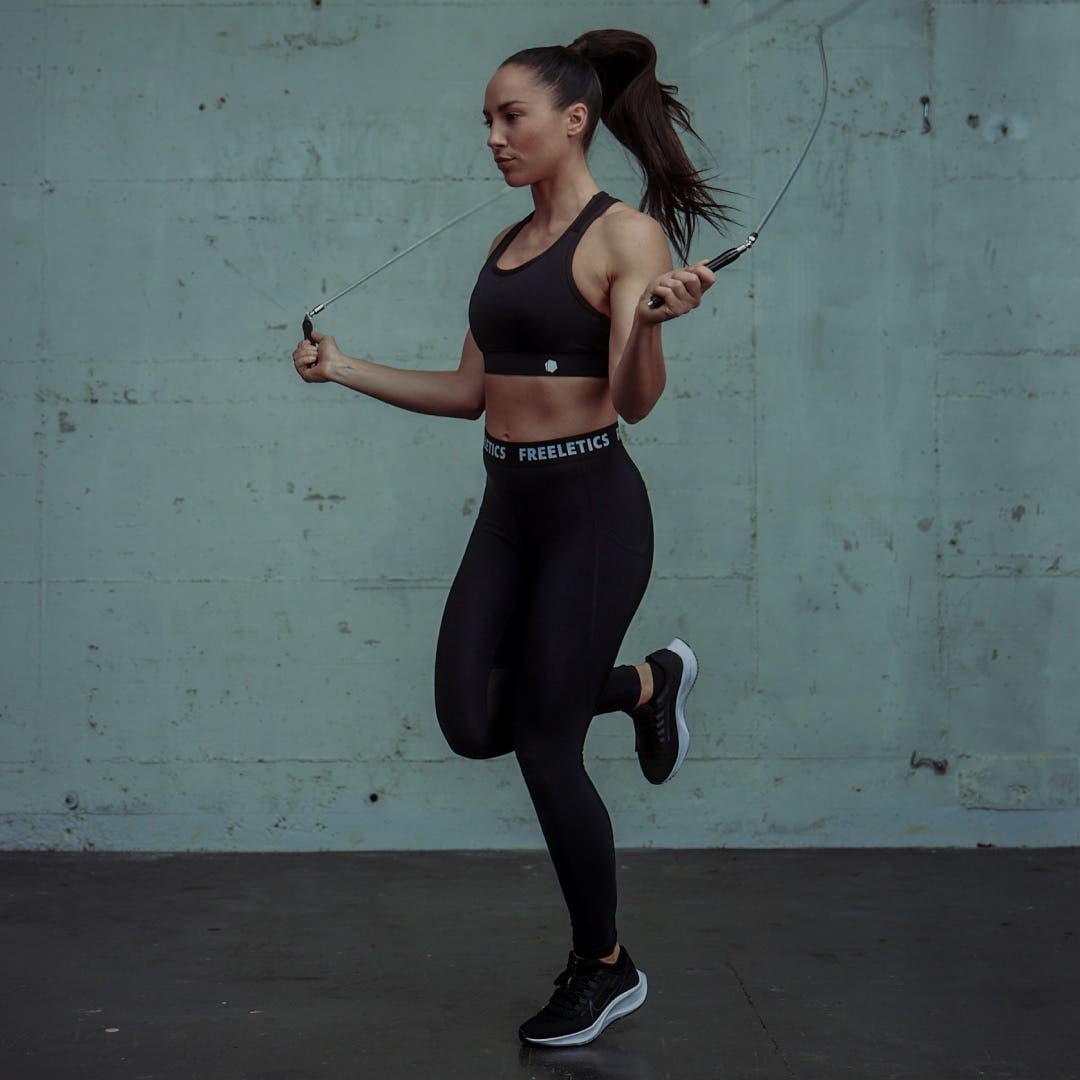Introduction
The health benefits of a jump rope workout are vast: from improving coordination, agility, and concentration to boosting cardiovascular fitness and muscle tone.
You’re probably familiar with the typical speed rope, but what if you could get your hands on a rope that helps you break training plateaus? That lets you increase your jump rope skills, and build greater jump rope strength and stamina?
Well, you can. Introducing the new Freeletics Weighted Jump Rope.
Let’s jump in and take a closer look.
Unique Benefits of a Weighted Jump Rope
In addition to the benefits of a standard jump rope, the weighted version offers other fitness advantages, including:
Easier transition for improving skills. There is a risk of tripping up on a rope when you’re first learning because the jump rope is too light or doesn’t give you enough feedback on the position around you. The weighted jump rope removes this risk by giving you better feedback and improving your coordination, allowing you to master those new skills in no time. Take jumping to the next level. Once you’ve mastered a jump rope, the common exercises can feel very easy and not very challenging. Introducing a heavier cable adds another dimension to your jump rope routine. Together, this helps you to burn more calories and challenges the stamina and strength of your muscles further.
Which Muscles Do You Target?
If you’re looking to build strength, jump ropes probably aren’t the first thing that spring to mind. That’s where a weighted jump rope comes in.
Using a weighted jump rope actually engages many different muscle groups, particularly the calves and arms. The extra resistance that a weighted jump rope provides can even help to stimulate muscle growth. Let's take a closer look.
Calf muscles
Skipping is the perfect way to strengthen and tone your calf muscles. That’s because using a jump rope requires you to stay on the balls of your feet, placing greater demand on your lower leg muscles. The stronger your calves, the more stable you’ll be. Plus, you’ll increase your stamina and be able to jump even higher.
It’s important to note that using a jump rope continuously can put your calf muscles under greater stress. So, always remember to include rest days into your exercise routine in order to give muscle groups a chance to rest, recover, and grow!
Forearms
While the lower body muscles are getting a good workout with the weighted jump rope, let’s not forget that the upper body muscles are too. In order to rotate the rope, you primarily use your forearm muscles. Want to up the intensity? Try using a heavier cable or performing advanced jumps, like Double Unders. Your forearms will feel the burn, and, because your shoulders support your arms, they’re engaged too.

Try A Few Exercises
Learning to jump rope with a weighted rope is easier than a standard speed rope. That’s because the added weight gives you greater control over each rotation enabling you to find your ideal rhythm and pace quickly.
That’s not all. Using a weighted jump rope will burn more calories, benefit your cardiovascular system, and give your muscles a more intense workout. This equipment is a great addition to your workout routine, not least because you can simply pop it in your bag and work out ANYWHERE, ANYTIME.
Use the Weighted Jump Rope for any jump rope exercises in the Freeletics app, including these:
Single Unders
Single Unders are the most common jump rope exercise. Simply, jump once as the rope passes under you. You can increase the speed or height of your jump as you become more confident with this exercise.
One-Legged Jumps
Just like Single Unders but on one leg! This exercise will help to give your calves a good workout. Don’t forget to alternate your legs and target both equally.
Double Unders
Hard to master, double unders are probably the most famous jump rope exercise, but once you’ve got it, you’ll look impressive. Keep your elbows close to you and jump higher than when you perform Single Unders.
[URL] /weighted-jump-rope
[CTA] Go ahead and jump